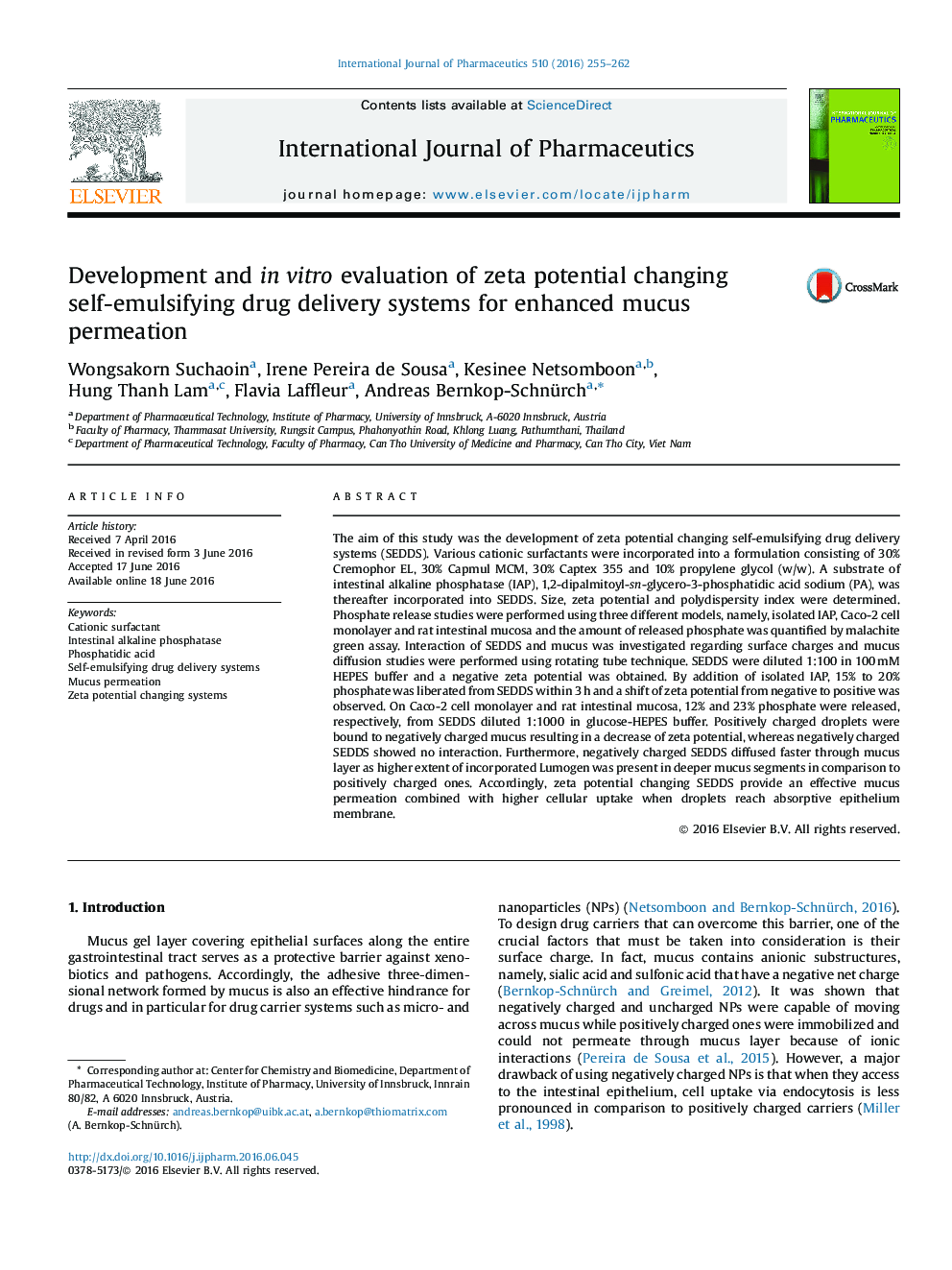| کد مقاله | کد نشریه | سال انتشار | مقاله انگلیسی | نسخه تمام متن |
|---|---|---|---|---|
| 2500842 | 1557311 | 2016 | 8 صفحه PDF | دانلود رایگان |
The aim of this study was the development of zeta potential changing self-emulsifying drug delivery systems (SEDDS). Various cationic surfactants were incorporated into a formulation consisting of 30% Cremophor EL, 30% Capmul MCM, 30% Captex 355 and 10% propylene glycol (w/w). A substrate of intestinal alkaline phosphatase (IAP), 1,2-dipalmitoyl-sn-glycero-3-phosphatidic acid sodium (PA), was thereafter incorporated into SEDDS. Size, zeta potential and polydispersity index were determined. Phosphate release studies were performed using three different models, namely, isolated IAP, Caco-2 cell monolayer and rat intestinal mucosa and the amount of released phosphate was quantified by malachite green assay. Interaction of SEDDS and mucus was investigated regarding surface charges and mucus diffusion studies were performed using rotating tube technique. SEDDS were diluted 1:100 in 100 mM HEPES buffer and a negative zeta potential was obtained. By addition of isolated IAP, 15% to 20% phosphate was liberated from SEDDS within 3 h and a shift of zeta potential from negative to positive was observed. On Caco-2 cell monolayer and rat intestinal mucosa, 12% and 23% phosphate were released, respectively, from SEDDS diluted 1:1000 in glucose-HEPES buffer. Positively charged droplets were bound to negatively charged mucus resulting in a decrease of zeta potential, whereas negatively charged SEDDS showed no interaction. Furthermore, negatively charged SEDDS diffused faster through mucus layer as higher extent of incorporated Lumogen was present in deeper mucus segments in comparison to positively charged ones. Accordingly, zeta potential changing SEDDS provide an effective mucus permeation combined with higher cellular uptake when droplets reach absorptive epithelium membrane.
Figure optionsDownload high-quality image (201 K)Download as PowerPoint slide
Journal: International Journal of Pharmaceutics - Volume 510, Issue 1, 20 August 2016, Pages 255–262
